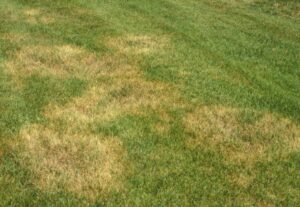Yellow grass can occur for a number of reasons. Two common causes are poorly maintained lawnmower blades and a low-quality lawnmower. At Douglas Forest and Garden, we provide a lawnmower service to help sharpen your lawnmower blades and keep the engine running well. Here are some things to check before calling out.
Do You Get Yellow Grass After Mowing?
Check the grass to see if you notice signs of drying out at the tips where the cut took place. Rather than a clean cut, has the lawnmower blade shredded and torn the grass? This is a sure sign that either the lawnmower blade isn’t sharp enough or it’s a low-quality lawnmower where the blade is not turning fast enough to cut properly. Either way, the issue is damaging your lawn. Compare its specifications with our range of high-powered lawnmowers.
Is The Yellow Grass Weather Dependent?
Often if the soil quality is problematic you can get issues. The soil can cause yellow grass if it drains too quic kly or holds too much water. If you get yellow patches in certain areas, check if the soil is sandier than the surrounding areas and therefore drying out faster. In those areas, you can always add something to the upper layers of soil to help increase its water retention, such as compost or mulch.
kly or holds too much water. If you get yellow patches in certain areas, check if the soil is sandier than the surrounding areas and therefore drying out faster. In those areas, you can always add something to the upper layers of soil to help increase its water retention, such as compost or mulch.
If there are rocks or stones in some areas of the garden that can also cause yellowing in some areas rather than others as the grass’ root system is inconsistent. If the species of grass bunches (such as tall fescue), then this is also going to make it more suspectable to yellowing after moving. In bunching species, it’s usually advised to keep the grass taller than 8cm.
We hope that this gives you some idea of why you may be experiencing yellow grass. If you still have any questions or concerns please feel free to stop by or give us a call on 0214965132.
